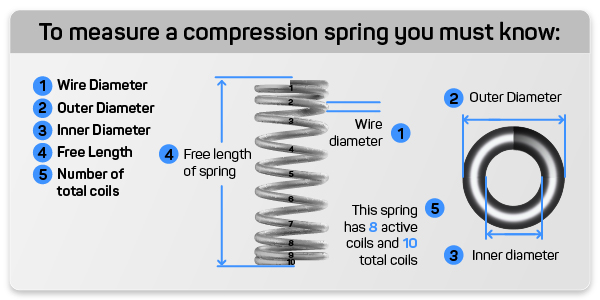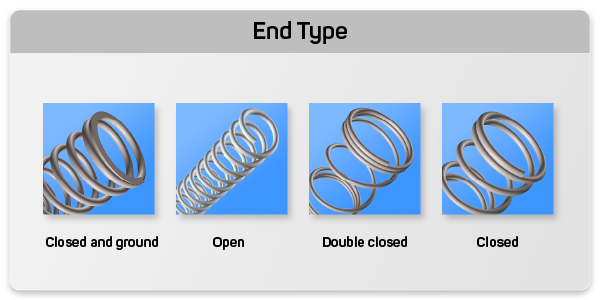Helical Springs
Definition:
Helically wound wires which form a spring. They are made to absorb or eject an energy or force.
Helical springs are also known as compression springs and are the most common type of spring in the market. Acxess Spring makes custom helical springs but also provides its customers with a wide range of stock helical compression springs through our online store, The Spring Store. You are able to find your helical springs by only inputting either outer or inner diameters along with the free length you desire your helical spring to have.

In case you are unsure of your helical spring’s physical dimensions, you can use our easy to read how-to-measure diagram to the left. The best way to measure a helical spring is using a dial or digital caliper. To accurately measure your helical spring’s dimensions, follow the instructions provided below:
- Outer Diameter: Vertically place the spring between the caliper’s outside jaws and make sure that they are perfectly aligned with the axis (center) of your spring’s cylindrical shape
- Inner Diameter: Place the caliper’s inside jaws inside your spring’s inner diameter while your spring is put at its vertical position
- Wire Diameter: Keeping your spring vertical, place the caliper’s outside jaws on the outer edges of the wire diameter
- Free Length: Horizontally place the helical spring between the caliper’s outside jaws. Make sure you are including the whole part of the spring without leaving any edges sticking out
- Total Coils: Count your spring’s coils by looking at your spring horizontally with the tip of the first coil aligned at the center. Begin counting from the second coil and stop at the last coil

Helical springs also have different end types because some ends may provide the helical spring more stability while others will provide more flexibility. The types of ends are the following:
- Closed Ends: Most common end type
- Ground Ends: Made to provide stability in case a spring has the risk of tipping over when placed vertically on a flat surface
- Double Closed Ends: Also made to provide stability but in this case they are used when the spring design has a risk of buckling
- Open Ends: All coils are active, therefore giving the helical spring less force but more travel as well as reducing your spring's solid height





